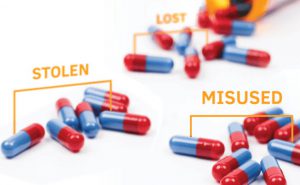The Quest Diagnostics Drug Testing IndexTM, is viewed as the industry standard for measuring and reporting workforce drug use. It is published as a public service for government, media and industry and has been considered a benchmark for national trends since its inception in 1988.
Employers that implement drug testing programs do so for a variety of reasons, most often to protect the health and well-being of employees and avert business risk associated with drug-induced judgments. The 2009 DTI looks at ‘recent use,’ as measured by laboratory analysis of a urine sample, which detects drug use within the prior one to three days.

Post-accident tests find opiates up to four times more than pre-employment tests
More American workers and job applicants are testing positive for prescription opiates, according to U.S. general workforce data in the 2009 Quest Diagnostics Drug Testing IndexTM (DTI). Results from more than 5.5 million urine drug tests reveal an 18 percent jump in opiate positives in the general U.S. workforce in a single year (2008 to 2009), and a more than 40 percent climb from 2005 to 2009.
In addition, 2009 post-accident drug tests found opiates up to four times more often than pre-employment tests (3.7 percent in post-accident as compared to 0.78 percent in pre-employment tests in the case of hydrocodone), suggesting that these drugs may be playing a role in workplace accidents.
“Evidence of increased opiate use is now appearing in the workplace as well as the ER,” said Dr. Barry Sample, director of science and technology for Employer Solutions, Quest Diagnostics. “Because more U.S. workers are performing their duties while taking prescription opiates, employers, particularly those with safety-sensitive workers, should note this trend and take appropriate steps to ensure worker and public safety.”
The new DTI findings are consistent with a June report from the Drug Abuse Warning Network (DAWN), part of the U.S. Department of Health & Human Services. The DAWN study reported a 111 percent increase in the estimated number of emergency department visits for nonmedical use of opioid analgesics from 2004-2008 (from 144,600 to 305,900), and a 29 percent jump from 2007-2008. The highest numbers of emergency department visits were recorded for oxycodone, hydrocodone and methadone, some of the same drugs showing increased use by the U.S. workforce in Quest Diagnostics’ DTI data. Possible opiate side effects include drowsiness, nausea, constipation, and depending upon the drug taken, depressed respiration. They are known for their potential for addiction as well for the euphoria they can induce owing to their effect on regions of the brain that mediate what the body perceives as pleasure.
“The HHS report on nonmedical use of opiates – and its consistency with DTI findings – is notable and of concern, but it’s important to remember that prescribed pain medication plays an important role in patient care and improved health,” said Jon R. Cohen, M.D., senior vice president and chief medical officer, Quest Diagnostics. “Because both prescribed use and misuse of opiates appear to be on the rise, employers will want to address this issue comprehensively as they work to ensure employee health and safety.”
Within the opiate category, semi-synthetic opiates showed higher numbers. Hydrocodone – which, according to a 2010 Drug Topics report, has been the most prescribed generic drug for the past three years – registered a 1.3 percent positivity rate in 2009 general U.S. workforce DTI data. Oxycodones showed a 1.0 percent positivity, while hydromorphone reached 0.82 percent. Naturally occurring opiates, codeine and morphine, were found at far lower positivity rates, 0.21 percent and 0.48 percent, respectively.
Cocaine and Methamphetamine Positives Continue Declines; Amphetamine Positives Jump Again
Consistent with prior DTI reports highlighting illegal drug use trends, the 2009 index shows that cocaine use continued to decline sharply in 2009 vs. 2008, down 29.3 percent (0.29 percent vs. 0.41 percent, respectively) in the general U.S. workforce, and 25 percent (0.24 percent vs. 0.32 percent, respectively) in federally mandated safety-sensitive (FMSS) workers. While methamphetamine showed little or no change, amphetamine positives continue to climb (greater than 15%) in both general and FMSS workers.
Click here to review the full Drug Testing IndexTM.
To view the Drug Testing IndexTM archives, click here.
For more information about drug testing, visit our website.
The Drug Testing Index© 2010 Quest Diagnostics Incorporated. All rights reserved.




















The Quest Diagnostics Drug Testing IndexTM, is viewed as the industry standard for measuring and reporting workforce drug use. It is published as a public service for government, media and industry and has been considered a benchmark for national trends since its inception in 1988.
Employers that implement drug testing programs do so for a variety of reasons, most often to protect the health and well-being of employees and avert business risk associated with drug-induced judgments. The 2009 DTI looks at ‘recent use,’ as measured by laboratory analysis of a urine sample, which detects drug use within the prior one to three days.
Post-accident tests find opiates up to four times more than pre-employment tests
More American workers and job applicants are testing positive for prescription opiates, according to U.S. general workforce data in the 2009 Quest Diagnostics Drug Testing IndexTM (DTI). Results from more than 5.5 million urine drug tests reveal an 18 percent jump in opiate positives in the general U.S. workforce in a single year (2008 to 2009), and a more than 40 percent climb from 2005 to 2009.
In addition, 2009 post-accident drug tests found opiates up to four times more often than pre-employment tests (3.7 percent in post-accident as compared to 0.78 percent in pre-employment tests in the case of hydrocodone), suggesting that these drugs may be playing a role in workplace accidents.
“Evidence of increased opiate use is now appearing in the workplace as well as the ER,” said Dr. Barry Sample, director of science and technology for Employer Solutions, Quest Diagnostics. “Because more U.S. workers are performing their duties while taking prescription opiates, employers, particularly those with safety-sensitive workers, should note this trend and take appropriate steps to ensure worker and public safety.”
The new DTI findings are consistent with a June report from the Drug Abuse Warning Network (DAWN), part of the U.S. Department of Health & Human Services. The DAWN study reported a 111 percent increase in the estimated number of emergency department visits for nonmedical use of opioid analgesics from 2004-2008 (from 144,600 to 305,900), and a 29 percent jump from 2007-2008. The highest numbers of emergency department visits were recorded for oxycodone, hydrocodone and methadone, some of the same drugs showing increased use by the U.S. workforce in Quest Diagnostics’ DTI data. Possible opiate side effects include drowsiness, nausea, constipation, and depending upon the drug taken, depressed respiration. They are known for their potential for addiction as well for the euphoria they can induce owing to their effect on regions of the brain that mediate what the body perceives as pleasure.
“The HHS report on nonmedical use of opiates – and its consistency with DTI findings – is notable and of concern, but it’s important to remember that prescribed pain medication plays an important role in patient care and improved health,” said Jon R. Cohen, M.D., senior vice president and chief medical officer, Quest Diagnostics. “Because both prescribed use and misuse of opiates appear to be on the rise, employers will want to address this issue comprehensively as they work to ensure employee health and safety.”
Within the opiate category, semi-synthetic opiates showed higher numbers. Hydrocodone – which, according to a 2010 Drug Topics report, has been the most prescribed generic drug for the past three years – registered a 1.3 percent positivity rate in 2009 general U.S. workforce DTI data. Oxycodones showed a 1.0 percent positivity, while hydromorphone reached 0.82 percent. Naturally occurring opiates, codeine and morphine, were found at far lower positivity rates, 0.21 percent and 0.48 percent, respectively.
Cocaine and Methamphetamine Positives Continue Declines; Amphetamine Positives Jump Again
Consistent with prior DTI reports highlighting illegal drug use trends, the 2009 index shows that cocaine use continued to decline sharply in 2009 vs. 2008, down 29.3 percent (0.29 percent vs. 0.41 percent, respectively) in the general U.S. workforce, and 25 percent (0.24 percent vs. 0.32 percent, respectively) in federally mandated safety-sensitive (FMSS) workers. While methamphetamine showed little or no change, amphetamine positives continue to climb (greater than 15%) in both general and FMSS workers.
Click here to review the full Drug Testing IndexTM.
To view the Drug Testing IndexTM archives, click here.
For more information about drug testing, visit our website.
The Drug Testing Index© 2010 Quest Diagnostics Incorporated. All rights reserved.